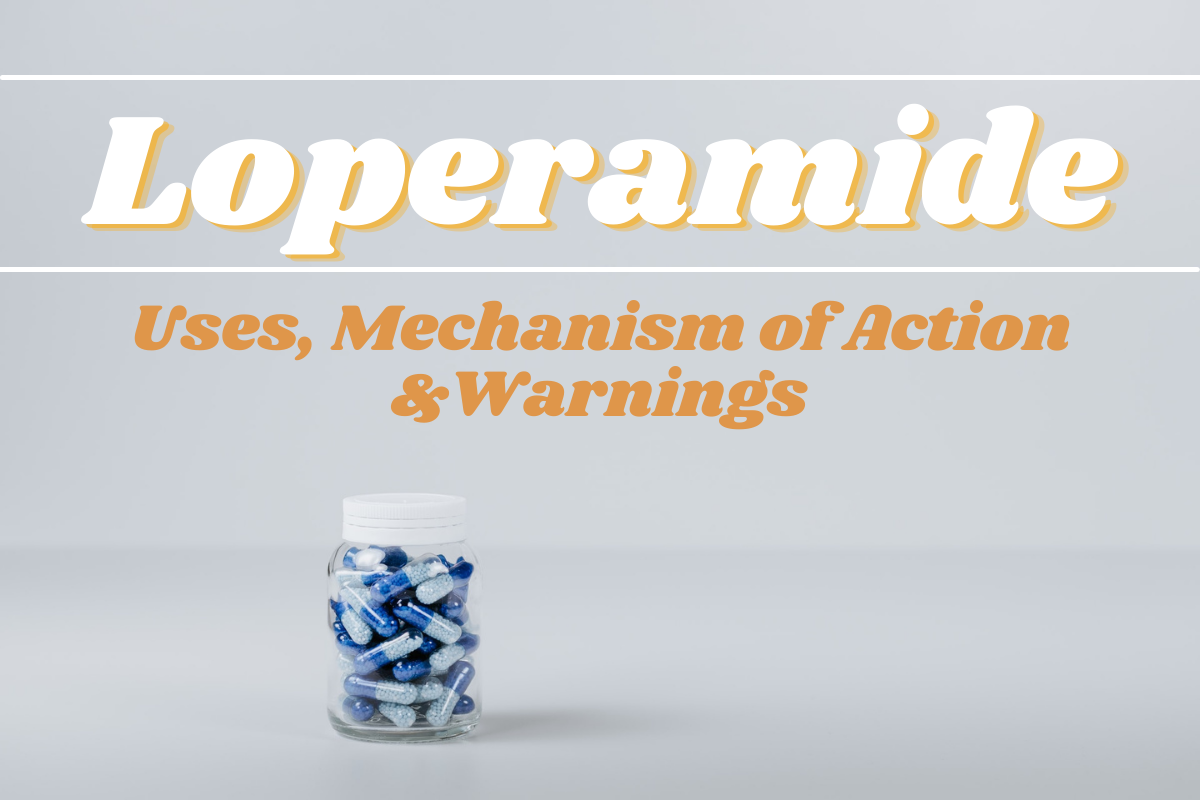What is Loperamide?
Used to treat non-specific diarrhea, Loperamide; an anti-diarrheal long-acting drug is also a suitable candidate for the treatment of Chronic diarrhea or gastroenteritis. It is an OTC (over-the-counter) oral anti-diarrheal medication that was initially introduced in 1969. It was first used medically in 1976 and became available as a non-prescription medicine in 1988.
What is Loperamide used for?
Presently, the FDA has approved this drug for the treatment of numerous types of diarrhea, and it is also used off-label to treat diarrhea caused by chemotherapy. Non-medical use of the drug has grown in popularity in recent years, with applications ranging from self-management of opiate withdrawal effects to euphoria induction (getting high). A novel illness known as loperamide-induced cardiotoxicity has just been discovered. When it is used in toxic levels, patients might develop a variety of potentially lethal dysrhythmias.
Loperamide Mechanism of Action
Loperamide operates through a variety of methods to reduce peristalsis and fluid secretion, leading to a prolonged gastrointestinal transit time and higher fluid and electrolyte absorption from the gastrointestinal tract. It’s a phenylpiperidine analog with a molecular structure comparable to diphenoxylate and haloperidol, which are opiate receptor agonists. The drug works by directly inhibiting peristaltic activity in the circular and longitudinal muscles of the intestinal wall. It binds to opioid mu-receptors and is a non-selective calcium channel blocker.
Pharmacokinetics
Loperamide is an agonist for the mu-receptor. CYP3A4, a cytochrome P450 enzyme, extracts it in the liver and metabolizes it. It is conjugated after that and eliminated in the bile. There is almost no active loperamide in the systemic circulation at recommended doses.
It has less than 2% bioavailability. Its onset of action is almost 1 hr, with a plasma half-life of almost 11 hours. The unaltered loperamide and its metabolites are mostly excreted in the feces.
Available Dosage Forms
Loperamide is available in the following different dosage forms:
- Oro-dispersible tablets
- Capsules
- Tablets
- Syrup
Loperamide Dosage
Traveler’s diarrhea or acute diarrhea
The initial recommended dose is 4mg
The subsequent dose is 2mg after every unformed stool (total dosage should not exceed 8mg per day OTC, and with prescription, maximum dosage per day limit is 16mg)
Loperamide Side Effects
Following are some undesirable effects:
- Urinary retention
- Fecal impaction
- Ileus
- Dizziness and drowsiness
- Dry mouth and constipation
- Other serious side effects associated with the use of the drug are toxic megacolon, necrotizing enterocolitis, toxic epidermal necrolysis, syncope, Stevens-Johnson syndrome, Syncope, Torsade de pointes, Ventricular tachycardia, Ventricular tachycardia, and Cardiac arrest.

Overdose
CNS effects can develop in children under the age of two who are given large amounts, or in children who have accidentally overdosed.
How to reverse undesirable effects produced by Loperamide?
Undesirable effects of the drug can be reversed by using Naloxone.
Loperamide Warnings
Loperamide contraindications are given below:
- Children less than two years old
- Bloody diarrhea
- Acute ulcerative colitis,
- Diarrhea related to bacterial infections
Why Loperamide is banned?
In recent times, there has been a considerable increase in the use and misuse of the drug as a manner of self-management of withdrawal symptoms and as a cheap way to produce euphoria or to achieve a euphoric mood. People have been using it to self-medicate to reduce the withdrawal symptoms of opiate addiction or to speed up the tapering process. High-dose loperamide has recently shown potential in this regard.
So, FDA has limited packaging for anti-diarrhea medication loperamide HCL (Imodium) to encourage safe use.
Indications
FDA approved uses of the drug Loperamide include
- Various types of diarrhea such as traveler’s diarrhea
- Irritable bowel syndrome (IBS) is associated with chronic diarrhea
- Acute nonspecific diarrhea in patients two years of age and older
- Decreasing ileostomy output
- Chemotherapy-related diarrhea

Interactions
It shows interactions with the following drugs
- Erythromycin
- Fluconazole
- Ketoconazole
- Quinidine
- Ritonavir
Loperamide Hydrochloride Brand Names
- Imodium
- Imodium A-D
- Kaopectate II
Is Loperamide the same as Imodium?
Yes. This drug is sold over the counter (OTC), under the brand name Imodium. Imodium contains Loperamide HCL as the active ingredient.
Is it safe to take Loperamide (Imodium) during pregnancy
Taking Loperamide during pregnancy may be said okay but there are no shreds of evidence. FDA classifies the drug as a Pregnancy Category C drug. A drug classified as category C medication is in the middle and falls into the gray area. There could be some risk of harm to a fetus in animal studies, but there are no controlled pregnancy trials to assess the safety of category C medications.

